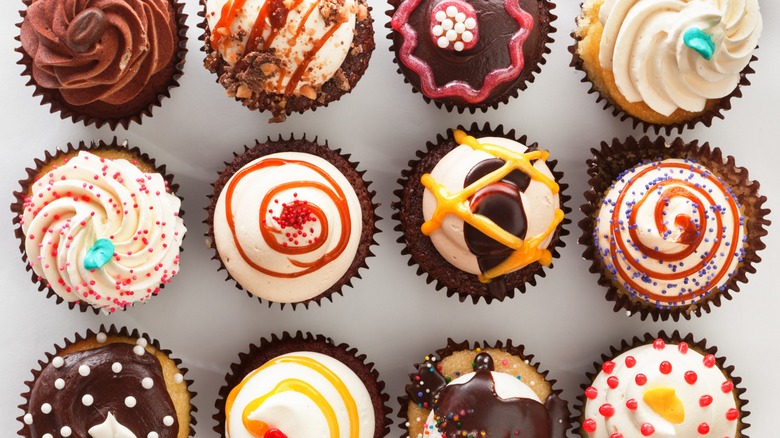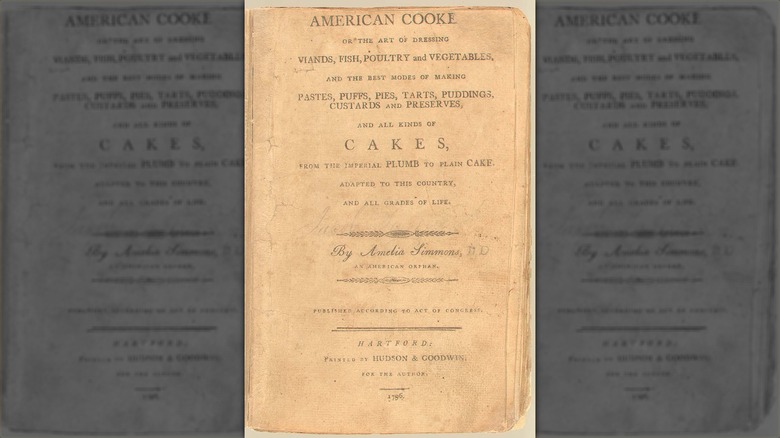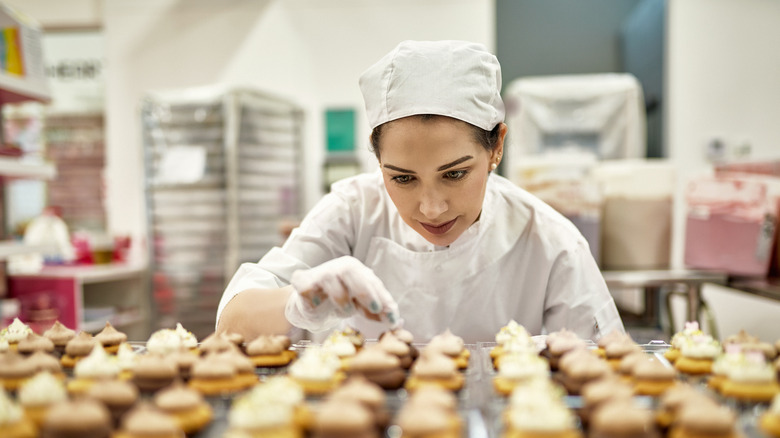The History Of Cupcakes And How They Became A Classic Treat
What's the "it" dessert currently? Donuts and Cronuts have had their respective runs, and despite predictions, coffee and tea-infused desserts haven't seemed to take the nation by storm. Perhaps a general fatigue with dessert crazes has set in; it may just be too much to see that one thing everywhere. But who among us can forget how it all started: with a cupcake.
If you're of a certain age, cupcakes were fodder for kids' parties and other large functions. It makes sense, as distributing them to hungry hands is a heck of a lot easier than slicing wedge after wedge of cake. But then, sometime in the early 2000s, cupcakes broke. A heady mixture of nostalgia, craftsmanship, and celebrity obsession — thanks Sarah Jessica Parker/Carrie Bradshaw — meant that everyone who was anyone was scarfing down high-end cupcakes with imaginative flavors. And nearly every bakery anywhere was scrambling to add them to the menu.
But from whence did cupcakes sprout, that is to say before "Sex and the City" gave them their star turn? The story is richer than one might imagine, stretching all the way back to the days of the emerging American identity.
A sweet star is born
Before the first muffin tins were stamped and paper cups were pumped out of factories, there were cupcakes — emphasis on the "cup." These diminutive pastries are thought to have gotten their name from the fact that they were originally baked in small dishes, or cups, similar to ramekins. It's a claim that is supported by one of the founding documents of gastronomy in the then-fledgling U.S.
In 1796, Amelia Simmons published the first American cookbook with a focus on popular recipes in the new nation and inclusive of native ingredients. "American Cookery" — as it was aptly named (though it bore a far longer full title) — was full of ingredients and techniques that would have been relatively unknown to European cooks. The book makes use of pumpkin in a custardy pie and gives instructions for how to make johnnycakes and other griddled treats.
Cupcakes, though, were baked like a normal cake. In "American Cookery," Simmons' recipe for "a light cake to bake in small cups" brings together sugar, butter, flour, a glass of wine, rose water, nutmeg, cinnamon, and currants to make a spiced batter. Unlike our modern cupcakes, there is no instruction to frost the tiny confections ever-skyward as is the modern style.
Cupcakes hit it big
Amelia Simmons' simple spiced cakes are indeed a far cry from what we think of today as cupcakes. As with a great many foods, an evolution clearly occurred, one that can be traced to a degree. The first known use of the term "cupcake," for example, pops up in an 1828 cookbook by author Eliza Leslie. It remained, like Simmons' creation, a heavily-spiced cake with ginger, cloves, allspice, and molasses, with nary a drop of frosting to decorate it.
By 1919, though, cupcakes definitely had frosting, as evidenced by Hostess' introduction of the first packaged version, the CupCake, which is still on store shelves today as a popular Hostess treat — albeit in a slightly different form. The original version paired devil's food cake with chocolate icing, the signature white swirl and cream filling both being later additions. Since then, cupcakes have been gently coaxed to stardom. Boxed cake mixes and paper baking cups made for easy preparation, cooking, and eating.
But it was the turn of the 21st century that really saw cupcakes hit their stride, as "Sex and the City" gave Magnolia Bakery its star turn. Suddenly, haute cupcakes were everywhere and chains popped up to provide gourmet takes on the dessert. The star turn burned bright and faded fast as a fickle populace moved on, but cupcakes endure as a favorite of young and old alike, if not quite as on-trend. Magnolia Bakery, despite diversifying its offerings, still serves "The Carrie Cupcake" – a vanilla number with pink buttercream — as a nod to the little cakes' big moment.


